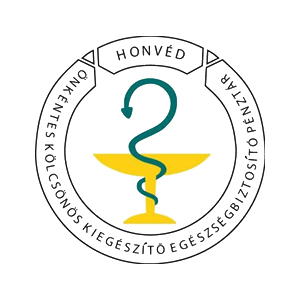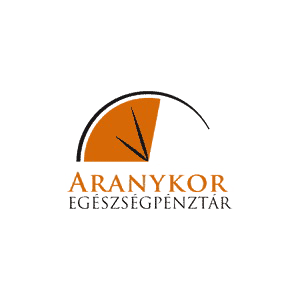The role of a proctologist is to diagnose and treat problems related to this part of the body, with particular emphasis on conditions such as inflammatory processes of the rectum, associated benign and malignant tumors, anal fissures, and hemorrhoids.
Nowadays, various proctological complaints are considered a widespread health issue, especially hemorrhoids. The primary reason for this is attributed to the fact that humans began walking on two legs, which places significant extra burden and pressure on the rectal area.
Why Consult a Proctologist?
The modern lifestyle of humans generally promotes the development of proctological diseases. A sedentary job, a lack of physical activity, and an unhealthy diet collectively increase the likelihood of related diseases appearing to an extraordinary extent.
The modern lifestyle of humans generally promotes the development of proctological diseases. A sedentary job, a lack of physical activity, and an unhealthy diet collectively increase the likelihood of related diseases appearing to an extraordinary extent.
Specifically, hemorrhoidal cushions are present in everyone as they play a key role in fecal continence. They become a significant problem mainly when they stretch or expand, which invariably requires some form of treatment.
Today, nearly 40 percent of the Hungarian population aged 50-60 suffer from regular proctological complaints that require continuous specialist monitoring and treatment.
It is an unfortunate fact that the incidence of related malignant colonic and rectal tumors shows a steadily increasing trend year by year, having increased fivefold in the past three decades alone.
In Hungary alone, approximately 5,000 people die annually from rectal cancer, despite the fact that with timely diagnosis and appropriate treatments, this disease can now be cured with very good chances of success.
Therefore, any rectal pain, other complaints, persistent bleeding, or changes in bowel habits should prompt immediate medical consultation. It may be only a stubborn hemorrhoid, but it could also indicate a more serious problem.
How Does a Proctological Examination Take Place?
Regardless of the complaints, a proctological examination always begins with obtaining the patient's medical history. Based on this information, a targeted examination is conducted, typically with the utmost discretion.
Often, for the examination of the rectum, it is sufficient for the patient to lie on their side, allowing the proctologist to examine the rectal area. However, in some cases, the patient may need to be on all fours or in a position similar to that used in gynecological exams.
While special positions may sometimes be necessary, the majority of proctological examinations begin with the patient lying on their side. This position is not only accessible for older patients but also generally does not require complete undressing, thus minimizing discomfort for more modest patients.
Visual Inspection is Often Sufficient
Once the patient's medical history and all related complaints have been reviewed, the first step in the proctological examination is the visual inspection of the affected area.
In many cases, conditions such as severe hemorrhoidal changes, anal fissures, various abscesses, thromboses, scars, other deformities, or dermatological diseases can be identified by visually examining the anal and perineal regions.
During the examination, the proctologist may ask the patient to tighten or press the anal muscles, which can help reveal any external hemorrhoidal networks and make it easier to identify prolapsed hemorrhoids or mucosal prolapse.
Rectal Digital Examination (RDE, Finger Examination of the Rectum)
If visual inspection does not yield results, the next method of examination is palpation. In this case, the proctologist puts on a glove and applies an appropriate lubricating substance to examine both the external and internal areas of the rectum.
During RDE, a variety of issues related to the rectum can be identified. For example, the state of the rectal muscles can be assessed, and in deeper layers, the condition of the prostate in men and the cervix or the uterus bulging towards the rectum in women can be easily palpated.
The specialist can determine abnormalities such as internal hemorrhoids, tumors, polyps, thromboses, or other growths (such as condylomas) with simple and painless maneuvers.
It is important to emphasize that although this examination method is painless, it may cause some discomfort for patients. Additionally, it is crucial to note that while the presence of hemorrhoids may be suspected during this examination, an accurate diagnosis often requires an endoscopic examination as well.
It is also important to highlight that the RDE should be performed on every patient with symptoms. While it can be postponed in cases of painful fissures or other issues, it is mandatory to carry out this examination when there are existing problems, as there could be an underlying malignant condition that cannot be detected through simple visual inspection.
Proctological Examinations with Instruments
Since only the last section of the rectum can be checked with a rectal digital examination (RDE), various instruments are often necessary to reveal the disease and achieve an accurate diagnosis.
These methods are particularly effective when the patient experiences symptoms such as bloody stool, painful and itchy rectum, discharge, discomfort, diarrhea or constipation, and incontinence.
One of the most common methods is the use of an endoscope, which can uncover diseases located in the innermost sections of the rectum, including hemorrhoids, fissures, polyps, or other anomalies. The endoscope is a crucial tool both for diagnosis and for performing interventions.
One of the most common methods for examining the anus is anoscopy. It is a painless—albeit somewhat uncomfortable—procedure that examines the last 6-8 centimeters of the rectum and is ideal for visually checking the condition of hemorrhoids. It is also the best method for certain treatments.
In addition to this—and often as a complement to it—there is also a need for rectoscopy. This examination is typically required when the rectal abnormalities are not confirmed by endoscopy and anoscopy. With rectoscopy, it is possible to check the bowel's condition up to a depth of 15-20 centimeters, which can easily reveal tumors or hidden polyps.
When performed carefully, rectoscopy is not painful, and an experienced proctologist can execute it safely. However, it is extremely important for the patient to cooperate appropriately to avoid sudden movements in response to pain and so forth.
The advantage of this method is that it is typically more uncomfortable than painful, and an immediate diagnosis can be made based on the results. In the event of a problem, a biopsy sample can be taken immediately using a biopsy spoon for histological examination if necessary.
The examination itself rarely takes more than a few minutes if the patient cooperates, although it requires preparation and specific expertise to perform correctly.














